After disassembling the USB power adapter of the iPhone, the contents look like this, what is the difference between genuine Apple?

Many electronic devices, including smartphones such as iPhones, have a built-in rechargeable battery and can be charged by connecting the USB cable connected to the USB power adapter. Therefore, there should be many people who have used a non-genuine USB power adapter, saying, 'It will be the same if USB is connected.' Engineer Ken Sirifu has released a report that disassembled and analyzed the genuine USB power adapter (5W) for iPhone about what makes Apple's genuine USB power adapter different from other adapters.
Apple iPhone charger teardown: quality in a tiny expensive package
The iPhone's USB power adapter is a switching power supply that switches the input power on and off about 70,000 times per second to get the required output voltage. Due to their design, switching power supplies are generally smaller, more efficient, and generate less heat than simple linear power supplies.
The image below shows the contents of the iPhone's USB power adapter taken from the side. Of the two upper and lower boards, the upper board is a high-voltage circuit and the lower board is a low-voltage output circuit. The alternating current that flows through the plug to the USB power adapter is converted to a high-voltage direct current and then smoothed by two black capacitors and a plain green inductor that are visible between the boards. After that, the high-voltage DC current passes through the switching MOSFET on the upper left, and chopper control is performed, which is cut off by turning it on and off.

The chopper-controlled DC current is

This is the first board on which the high voltage circuit is mounted. Of note is the pseudo-resonant SMPS controller IC from STMicroelectronics, which controls the switching MOSFETs. The auxiliary power supply circuit that drives this controller IC is also mounted on the first board.

The second board, which receives low-voltage alternating current, has diodes, inductors, and capacitors to eliminate noise. In addition, the USB terminal part has a special resistor connected to the data pin, which indicates to the iPhone the amount of current supplied by the charger via Apple's own protocol. If this resistance is different, the message 'Cannot charge with this accessory' will be displayed on the iPhone side.

The photo below shows a comparison of the size of the board side by side with a quarter coin with a diameter of about 25 mm. The smallest part is the resistor on the 'R21', which measures 0.04 inches (about 1.02 mm) x 0.02 inches (about 0.51 mm).

Since a maximum of 340V DC flows inside the USB power adapter, safety due to insulation is a very important issue. An interval of about 4 mm is required as an insulation boundary between each circuit, but it is said that the USB power adapter of iPhone has an insulation boundary of about 6 mm. Fake USB power adapters that are sold cheaply are extremely dangerous because they do not adhere to this isolation boundary, Siriff points out.
For example, if you look at a flyback transformer, which is a transformer, it is wrapped in two layers of yellow insulating tape, and an insulating shield is further attached underneath. The flyback transformer is one of the most important parts of a USB power adapter, and Siriff says, 'probably the most expensive part of a USB power adapter.'
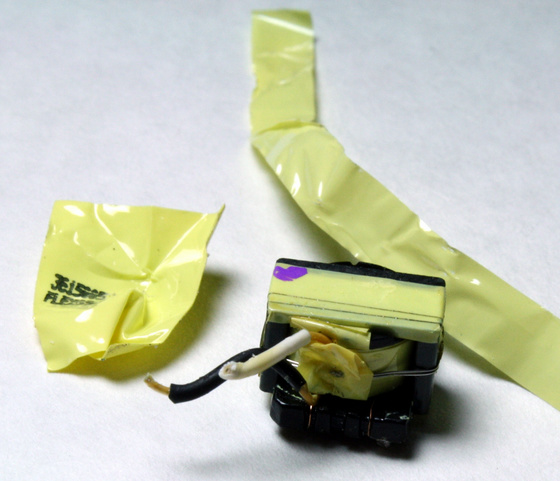
The insulating tape and insulating shield were removed, and the
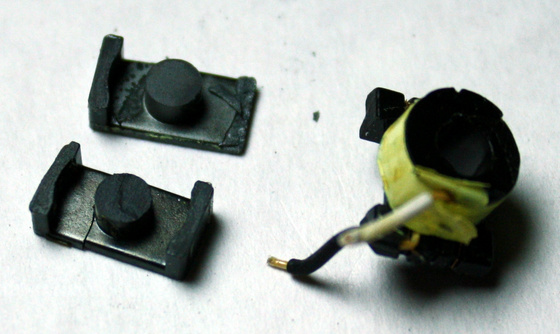
And the place where the insulating tape wound around the coil was peeled off is as follows. Mr. Siriff speculates that the copper wire wrapped around the insulating tape is a shield to suppress the stray magnetic field.
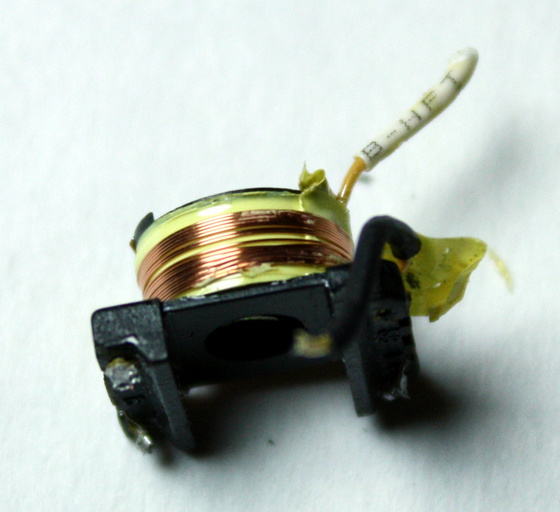
Underneath the wires and insulating tape, there was a 6-turn secondary coil connected to black and white wires. It is said that the reason why the conductor of this secondary coil that supplies power to the 1A output is thick is that it is triple-insulated to meet safety requirements. According to Mr. Siriff, with cheap fake USB power adapters, this secondary coil is often sloppy.

Furthermore, under the secondary winding, there is an 11-winding primary power coil. This is to power the controller IC and is insulated with a thin varnish.
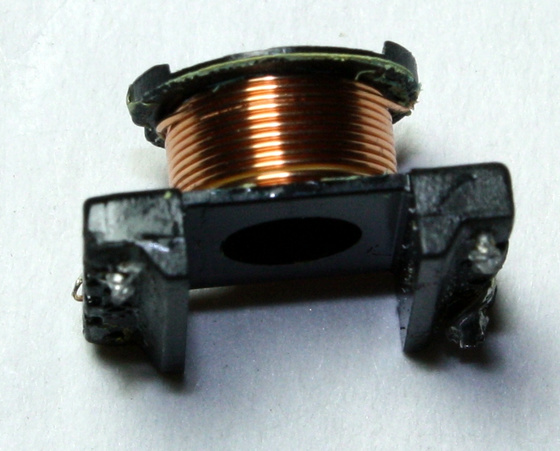
And below this primary power coil, there is a primary input coil with 23 turns x 4 layers = 92 turns. Since the number of turns of the primary power coil is about 15 times that of the secondary coil, the secondary voltage is 1/15 of the primary voltage and the current is 15 times. Therefore, the transformer converts the high voltage input into a lower voltage and higher current output.
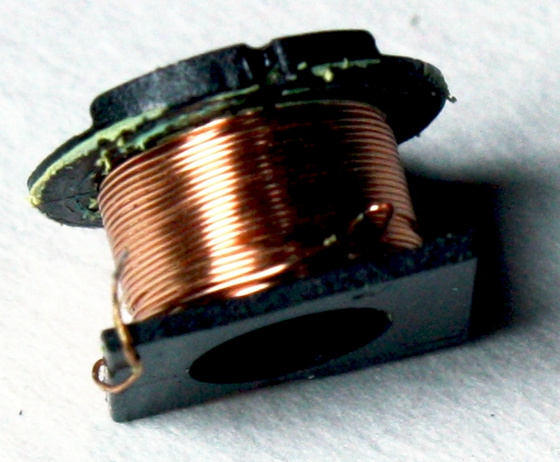
According to Mr. Siriff, Apple's USB power adapter has almost the same internal structure as Samsung's USB power adapter of the same size and type. However, the price of Apple's genuine USB power adapter is about $ 10 (about 1100 yen) to $ 20 (about 2200 yen) higher than Samsung products that are $ 6 (about 660 yen) to $ 10 (about 1100 yen). that's right.
Siriff points out that Apple's genuine USB power adapter is expensive, of course, and has high interest rate settings, as well as Apple's focus on safety and quality. For example, the output circuit of Apple's genuine USB power adapter uses two types of relatively expensive tantalum capacitors , the adapter plug is also very sturdy, and devised to reduce electromagnetic interference is firmly applied. It is said that it is. 'The iPhone's USB power adapter packs a lot of technology into a small space. Apple has made a special effort to provide higher quality and safety than other well-known brand chargers. And it costs a lot to maintain this quality. '
Related Posts:
in Hardware, Posted by log1i_yk







